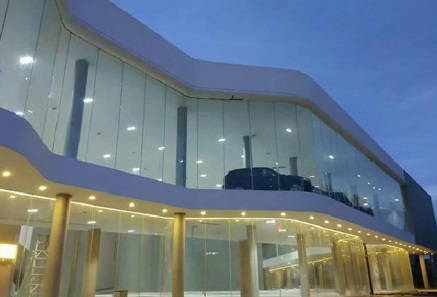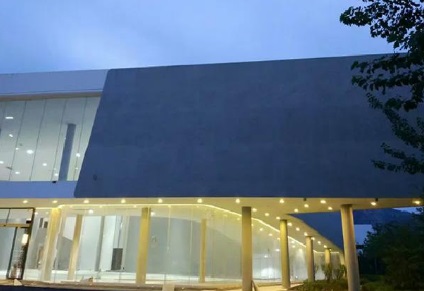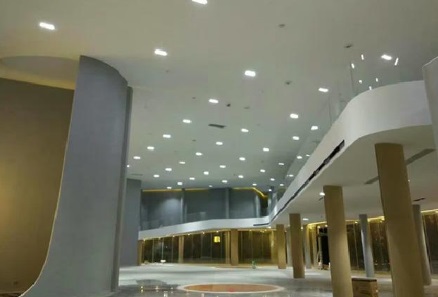Understanding Light And Brightness
- Time of issue:$dateInfo
- Views:0
Understanding Light And Brightness
(Summary description)Understanding Light And Brightness
- Categories:CASES
- Author:
- Origin:
- Time of issue:2020-05-11
- Views:0
LED lights are the future and quickly replacing older lighting technologies.They offer high efficiency saving enormous amounts of power compared to other ligthing technollogies.For example, an incandscent bulb produces about 16 lumens per watt(mor on lumens later ,HID lights up around 60 lumnes per watt,whiele LED lights have been produced rated at over 300 lumens per watt.While higher end LEDs in regular productin are arond 170lumens per watt and common LEDs ranging in the 100-140 lumen per watt range,these are all still tremendously more efficient than these older technologyies,With this increased efficiency comes big svaings in the forms of energy bills and lights that typically pay for themselves,sometimes in just a few months from the energy saving.Energy savings helps you keep moe money in your pocket and helps reduce the need for energy production making them eco-friendly.
Whether it is the solar parking lot lights, LED stdium lights, LED corn bulbs, LED construction lights, panel lights, or high bay lights ,making the switch to LEDs should be an easy decision,However, with this increase to efficiency,the old concept of picking a bulb out by the wattage just does not work anymore,It is time to start thinking about brightness and lumen output when deciding on what lights to purchase.
Brightness measures and the meaning of associated terms
Afew factors are associated with a bulb of fixture's brightness,First, it is dependent on the amount of energy emitted, know as radiant flux.You are rarely going to read about a measure in lighting as it is a general term for all types of energy and has associatons with radiometry.Luminous flux is th term far more specifica to lighting as it is the merasurment of the energy produced in the visible light spectrum.This is based on the human eye's sensitivity to light therefore it can be considerd a subjective measurement,Some colors seem a lot brighter to eyes compared to other, so although the same energy is generated, there is a difference in brightnss,Luminous flux unit of measure is the lumen.

Lumens:
This is the term to fucus on when making a purchase of an LED light.Lumen is a measurement of the amount of light emitted per unit of time and is the statistic you will see on most lighting products these days.To keep it simple, just think of it as how bright a ligth is.
Lux
One lumen is the amouint of light you need for illuminating a single square meter at one Lux's brightness,Lux is a measurement of light covering a certain area and one of the most common units used in light plans to show the brightness of an are produced by the lights being used.
Footcandle :Lighting professionals use the footcandle as one of the most common measure units for claculating the levels of light in outdoor and business spaces. Concisely,the footcabdle measures the intensity of light based on candelas which are also used in the calculation of lumens.The footcandle is an American lighting unit and though the equations for determining lux and footcandles are quite different, to the average person,they ae simply a measurement of brightness in a given area.A good comparison would be American standard units like feet and punds versus the Metric sstem wiht meters and grams. A simple equation that established the relation between Lux and Footcandle is that 1 fc is approximately 10 lux.
Example of outdoor values of natural light
If ther is a lot of sunlight outside,measurements of light can be in the area of 10,000 fc or 107,527 lux,On the other hand, it if is a cloudly night, then the illumination measure could be as low as 0.00001 fc or 0.0001lux. Recommended levels of light.
While otdoor levels of light are around 10,000 lux on a clear sunny day,electric lighting in a building, hte level of light is commonly wihtin the 100 to 1000 lux range (depending on the kind of activity)For detailed and precision work and activities the level of light may reach 1500 to 2000 lux and higher.

Factors affecting the illumination effectiveness
Generally, some of hte factors that affect illumination effctiveness are flicker amount,glare amount,shadows ,contrast,and light quality,Each element has to be differently adjsusted for optimizing illumination in security situations, operations, safety,and emergency, Standards of lighting address a multitude of concerns that are associated with minimum requirements of energy,installation, placement,and design.
Workplace lighting is essential, and thus light has to be work-specific
From the perspective of a worker,poor lighting leads to eye-strain,stress , headaches, and accidents,On the other hand ,excessive light has health and safety effects like stress an glare headaches,Thus,workplaces have separate illumination demands that again depend on the kind of work being done,The average office space would be around 500 lux,but might be as low as 250 depending on hte workplace needs,Public areas like stairwells ,hallways,elevators,bathrooms,and entrance lobbies are more commonly in the 200 lux range.Labs and places doing very detailed work, testing and visually intensive tasks may push their brightness all the way up to10,000 lux or even up near 20,000lux.
High bay lights used in wareouse lighting are often closer to 150lux when used more for storage,but an industrial warehouse or plant doing intensive manufacturing may be
up near 750-1000 lux.Often a large warehouse may have a sectin for storage and stocking items needing not as much light while another section may be used for more intensive work.In this case,more lights or more powerful lights may be used in certain areas needing brighter light.

Different lighting for different applications.
Retail environments
Retail environments of all sorts tend to be on the higher side as far as brightness is concerned.Sellers want their customers to clearly see their products to help with visual appeal for sales.Supermarkets and showrooms are typically in the 500-1000 lux range.Outdoor retail environments als differ.Parking lot lights are typically in the range of 10-15 lux on the ground,But move to an auto sales lot and that value jumps up to 150-200 lux.
Sport Lighting
An area that benefits majorly from led lights havs to be the sports lighting.There are basketball court lights, tennis court lights, and other sport court lighting is available in LED format for this reason.Sport lights have much higher lumnes and high wattages ,With the powerful lights used for sport lighting,the difference in energy used is huge,One of the most common sports lights used is a 1500 watt metal halide liht which is being replaced by 500 watt LEDD sport lights,a savings of 1000 watts per light.When you think of hte fact that locations light baseball fields and other large fields can use40,50and even hundreds of lights in the case of pro sport fields, you can see what a differnce an LED sport ligth can make on an energy bill, Secondly ,LED lights use custom optics making them bright hwere the light is needed on the field or court and not waste any of that light out of the palyign area.These optics als reduce glare,making it easier on a player's eyes to engage in sports during the night.
Playing fields and stadiums
LED sports lighting is quickly replacing metal halide and even older halogen lights on fields, courts, arenas and stadiums around the world .Horse riding,pickleball,temmis courts ,basketball,baseball,soccer,football and the list goes on for LED replacements,Professional sports have already had a large number of venues switch to LEDs.Using the hgiht-tech optics of LED lights ensures that bright light reches the areas wher it is needd for high-defintion televison broadcasts.It also helps to enhance a player's visbility to make plays and fans ability to see every play ,whether it be sitting in the stands or watching from home on thier TV.
No matter what your lighting needs are ,Qingdao Tonghui Lighting Technology Co.,ltd will get you the results you want.Energy savings helping to reduce power bills,Brightness gains from the efficiency and precision optics of LEDs for any application,Long lasting to keep maintenance costs low.If you have trouble figuring out your specific lighting needs,make sure you call and get help from an expert!
We make full use of the effect of different lights in the decoration work of automobile 4S shop.
For more detail please contact :joe@tonghuilighting.cn ,vicky@tonghuilighting.cn
Telephone No. : 0086-15753273917, 0086-15318718647
Scan the QR code to read on your phone

E-mail: info@tonghuilighting.cn
ADD: No. 1, Guiding Road, Licang District, Qingdao, Shandong, China
Tel: +86-532-80928966 +86-532-80925662


